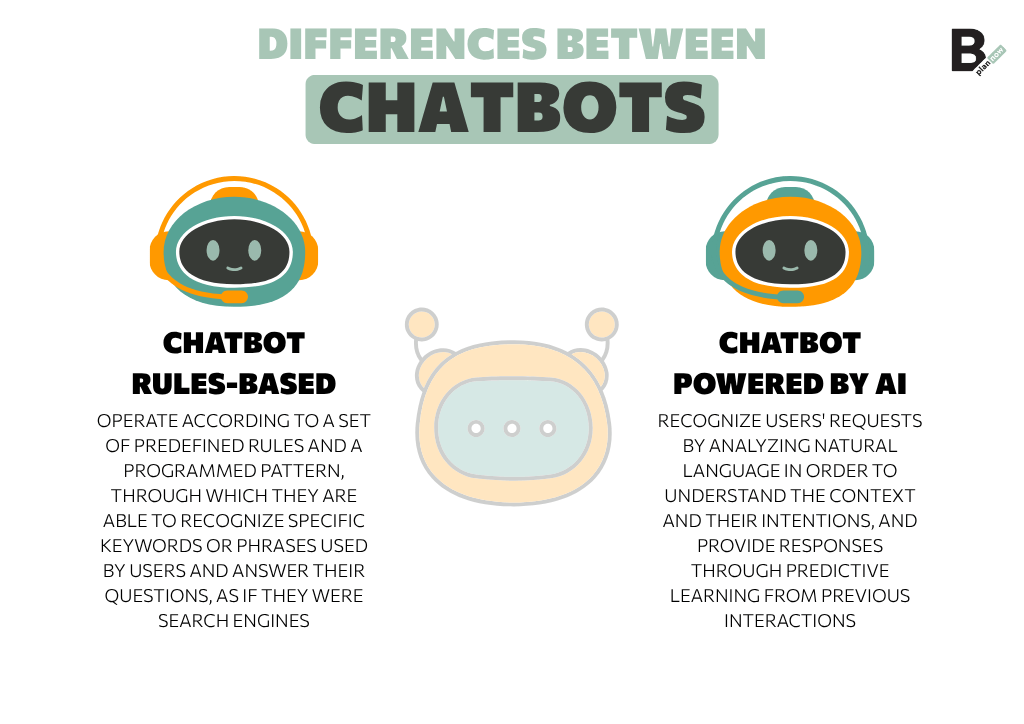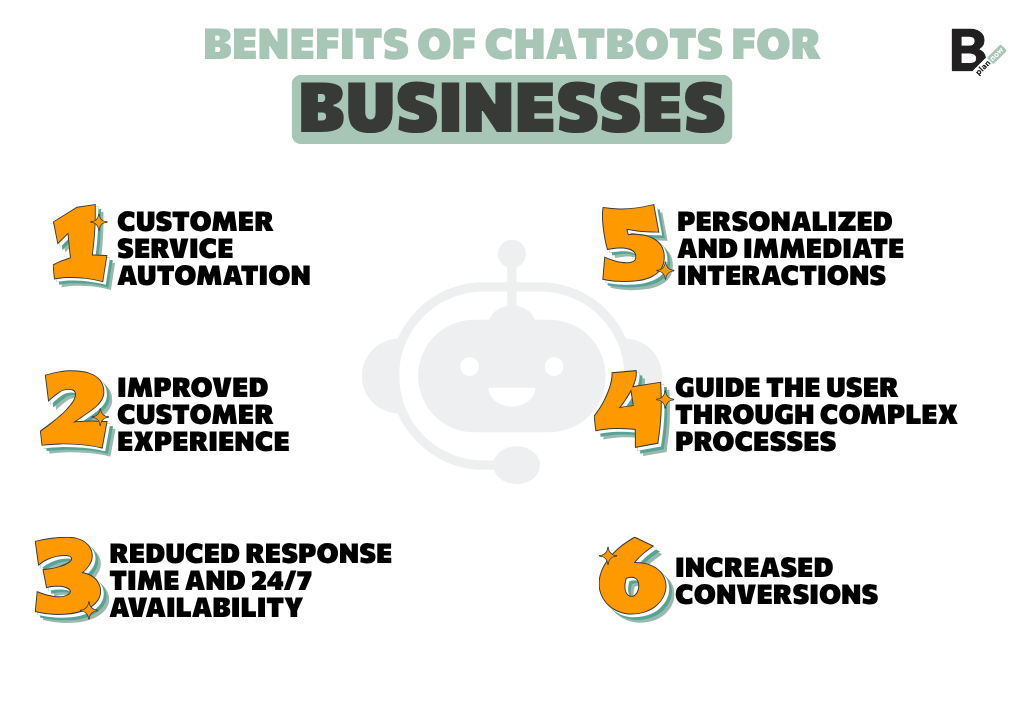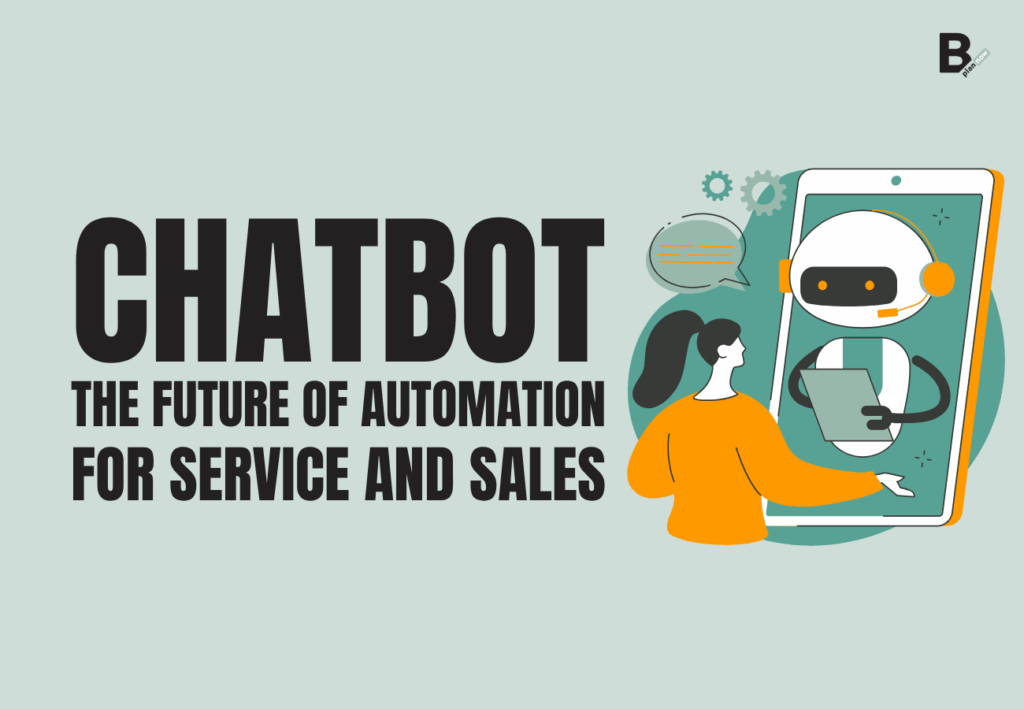Using chatbots can improve the customer experience and increase your startup’s conversions. In fact, tools of this type automate customer service and all sales interactions, allowing you to respond more quickly to consumer questions. Let’s get to know them better.
Chatbot: definition
The first person to talk about chatbots, or chatterbots, was in 1994 computer scientist Michael Mauldin, inventor of the Chatbot Verbot and one of the first search engines in Web history, Lycos.
To trace the meaning of chatbot and understand what exactly it is, however, it is necessary to break down the word, which comes from the union of the two English terms chat (conversation) and bot (robot). A chatbot, in fact, is a particular type of software capable of simulating a human conversation with a user in natural language through writing or voice.
Evolution of chatbots over time
In practical terms, although it can take many forms, the chatbot generally presents itself as a virtual assistant capable of responding appropriately, in the context of a realistic interaction characterized by natural language, to the various questions posed by users, offering them accurate, relevant, personalized and, above all, fast information.
Over the years, software of this kind has found multiple application possibilities, and more and more companies have decided to adopt them in their customer interaction processes. In more recent times, the development of Artificial Intelligence has helped redefine the very concept of chatbots, in essence and in form.
We will elaborate more on this in the next few lines.
How chatbots work
Nowadays, in light of the aforementioned development of Artificial Intelligence, it is possible to distinguish between two types of chatbots, which differ from each other in the way they operate.
Differences between rule-based and AI-powered chatbots

In more traditional and “simple” systems, chatbots operate according to a set of predefined rules and a programmed pattern, through which they are able to recognize specific keywords or phrases used by users and answer their questions, as if they were search engines.
More advanced AI-based chatbot systems, on the other hand, recognize users’ requests by analyzing natural language in order to understand the context and their intentions, and provide responses through predictive learning from previous interactions.
Benefits of chatbots for businesses
It is now time to understand why and how to use chatbots, exploring, one by one, the main benefits they can offer companies.

Customer service automation
From a Customer Centricity perspective, the use of enterprise chatbots enables the automation of repetitive actions in customer service.
You have probably realized that most users ask the same questions. With software of this type there is no need to answer each one manually, with the immediate benefit of reducing the workload of the employee in charge of this task. The benefits, however, are also others.
Reduced response time and 24/7 availability
Chatbots are present 24/7 to answer questions from an unlimited number of users. In this way, they make it possible to minimize the wait for a human operator to respond.
In this regard, however, it is important for you to reflect on one aspect, best summarized by this sentence from Matt Schlicht:
“A good chatbot should be like a good waiter: always there when you need it, but never too intrusive.”
Improving the customer experience
Chatbots are able to answer specific user questions with accurate and relevant information. This can optimize the customer relationship and improve the customer experience.
Personalized and immediate interactions
It will not surprise you to learn that the more attention a customer receives, the more willing they will be to buy (and return to buy) the company’s products or services. The ability to collect and analyze behavioral data and offer personalized and immediate interactions based on the specific needs of the audience is therefore a great opportunity.
Guide the user through complex processes
Chatbots, as already extensively emphasized, optimize interactions between company and customer and in this way make even the most complex processes simpler: thanks to these tools, in fact, it is possible to guide the user on his or her path to purchase, eliminating any possible slowdown or interruption.
Increased conversions
All the benefits just mentioned are realized in the most concrete and obvious benefit: increased conversions. This is also made possible by the fact that, through chatbots, it is possible (in an automated way) to recommend the purchase of products or services based on previous conversations and to let users know about active promotions and offers that they might find interesting.
Chatbots and Startups: a winning combination
The one between chatbots and startups is a winning combination, and the tangible benefits that this particular type of companies can achieve by integrating such software into their strategy are proof of this. Let’s proceed in order.
Operational efficiency: low cost without sacrificing quality
Chatbots are nowadays increasingly sophisticated tools, capable of automating repetitive tasks and processes with minimal margin for error when compared to human activity. This also translates into obvious savings in terms of less manpower to hire.
Scalability
Chatbots are tools that can handle a very large number of interactions simultaneously. Managing the same number of operations with human staff would be, for a startup, much more expensive and difficult.
Innovation and Brand Image
The decision to adopt chatbots can also prove successful for a startup because it signals innovation and adaptability on the part of the company, which in this way can increase its competitiveness in the market and benefit in terms of Brand Image, nationally and internationally.
Examples of successful implementation
We have already said it: chatbots can be used in a great many ways, in even very different areas and for a wide variety of purposes, as evidenced by the successful practical examples we are about to mention.
Erica, Bank of America‘s intelligent chatbot, is designed to provide the bank’s customers with a tailored financial guide capable of assisting them in every step, from managing bank accounts to monitoring expenses and paying bills.
Marriott, a well-known company in the hotel industry, uses chatbots as virtual concierges. With this technology, guests can request hotel services more conveniently (using simple text messages) and hotels can speed up the delivery of those services.
Mya, L’Oreal‘s AI assistant, on the other hand, has the express purpose of streamlining new employee recruitment processes. It is capable of efficiently handling large numbers of applications, allowing recruiters and hiring managers to focus their attentions and efforts on interviewing and closing deals.
Chatbots in e-Commerce
Chatbots prove particularly useful for e-Commerce sites: software of this type, in fact, as already pointed out, can guide the user’s journey with timely and targeted information, improve the user’s shopping experience by collecting feedback and data on user behavior, and finally, increase the chances of increasing sales, including through up-sellng and cross-selling strategies.
If you need e-Commerce advice, please do not hesitate to contact us. For now, it’s helpful for you to know that among the information chatbots can provide to users in an automated, real-time manner are details on shipping methods and payment options, as well as how to fill out payment forms, order confirmation notifications, and delivery status updates.
Understanding Natural Language
In order for a chatbot to be truly effective, it is essential that it be designed so that it can accurately understand the requests made by users and offer accurate, relevant and complete answers using language that is as natural as possible.
The natural language processing process of chatbots consists of several steps, ranging from Tokenization (i.e., breaking down language into tokens, i.e., words, spaces, punctuation, etc.) to lexical and morphological analysis. Crucial, of course, is testing the chatbots and refining their use so as to standardize and refine the dialogue experience for users.
Integration with existing systems
One of the main challenges you will face if you decide to implement chatbots in your startup’s marketing strategy lies in the need to integrate (including from a technical standpoint) these particular types of software with your existing IT infrastructure.
Nowadays, technology has made great strides, perfecting and facilitating the execution of multiple complex operations simultaneously, in part through the use of CRM-type management software, which incorporates all customer relationships (potential and actual) throughout the entire sales cycle into a single environment.
Chatbot: privacy and security
Another challenge is related to privacy and security. Do not underestimate this aspect and read the next lines carefully.
Secure management of sensitive data and compliance with privacy regulations
Chatbots, because of their conversational nature, have the potential to collect an enormous amount of personal data, including text, voice, device information, or user location.
For this reason, it is essential to pay special attention to the management of sensitive data, which must be 100% secure, and to compliance with regulations dedicated to privacy.
Future of chatbots in marketing and customer service
As has already been widely pointed out, chatbots have become absolutely central tools in companies’ marketing and customer service management. And they will be increasingly so.
Evolution toward advanced virtual assistants
Chatbots have long been able to automate the simplest tasks, such as answering users’ most frequently asked questions or providing them with information about products and services, thus giving them the ability to free up some employees’ time to enable them to do more complex and more valuable work.
The evolution toward chatbots as advanced virtual assistants is already underway: the challenge here is to focus on the aspects that generate the most frustration in users, such as unsatisfactory interactions with brands and negative experiences that affect consumer choices.
Integration with other emerging technologies, such as augmented and virtual reality
There’s one last piece of advice for you: if you want to harness the full incredible potential of chatbots, you need to integrate them as well as possible with both existing technologies (from social networks to messaging apps) and emerging ones (such as augmented and virtual reality), so that you can always offer your customers the right answer at the right time, in every situation.
Do you want to read all the articles related to the stage your startup is in?


